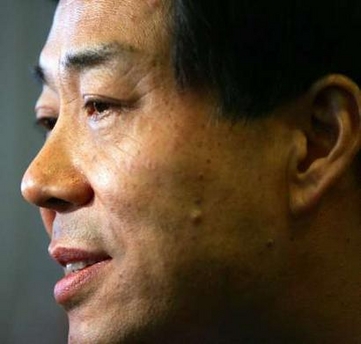|
Sino-US textile agreement takes effect today
(Xinhua)
Updated: 2006-01-01 09:36
The Sino-U.S. textile agreement will take effect as of January 1, 2006,
imposing quotas on a total of 21 types of clothing and textiles from China by
2008.
After seven rounds of talks, the United States and China in November, 2005
signed a three-year agreement on textile trade, imposing quotas on Chinese
textile products but clearing a major obstacle to bilateral trade.
A total of 21 types of clothing and textiles have been placed under the
import restrictions, including cotton trousers. The agreement provides for a
progressive increase in imports of major textiles and apparel products from
China -- by 10 to 15 percent in 2006, 12.5 to 16 percent in 2007, and 15 to 17
percent in 2008.

A woman works at a textile factory in
Xiangfan, Hubei province, China December 31, 2005.
[Reuters] | Meanwhile some ten kinds of Chinese
textile and apparel products exported to the European Union have also been put
under quota restrictions, according to an agreement reached by the two sides in
June 2005.
"The two textile agreements eliminate most uncertainties faced by Chinese
clothing enterprises when exporting goods to two of the most important overseas
markets," said Mei Xinyu, a research fellow with the Chinese Ministry of
Commerce.
On the basis of the two textile agreements, the Chinese Ministry of Commerce
has drafted regulations on the textile quota application process, and from 2006,
Chinese textile and apparel companies will try to get those quotas through the
new system.
In terms of the textile export to the United States, thirty percent of the
agreed quota in 2006 is distributed through public bidding, according to the
regulation of the Ministry of Commerce.
In December 2005, thousands of qualified textile enterprises in China joined
the first bidding for export quotas on 21 categories of textiles to the United
States in 2006.

China's commerce minister Bo Xilai speaks
after a conference at the sixth World Trade Organization (WTO) Ministerial
Conferences held in Hong Kong's Convention and Exhibition Centre December
14, 2005. [Reuters/file] | The heated on-line bid
has caused congestion on the official website for bid invitations. In response,
the government has prolonged the bid period by another 24 hours. Insiders
attribute the fierce competition to a half-year block on some kinds of products
to the United States.
Following the elimination of the global textile quota on January 1, 2005, the
United States and the European Union claimed that the surge of textile imports
from China had disrupted their domestic market.
Both of them put restrictive measures against some categories of Chinese
textile products since mid-2005, arousing strong objection from China. China
started to hold rounds of negotiations with them, which resulted in the two
textile agreements.
Quota bid will surely increase cost of Chinese textile exporters, so under
new circumstances, Chinese textile enterprises need to accelerate industrial
upgrading and enhance self-innovation capability so as to meet the new
challenges, insiders suggested.
|